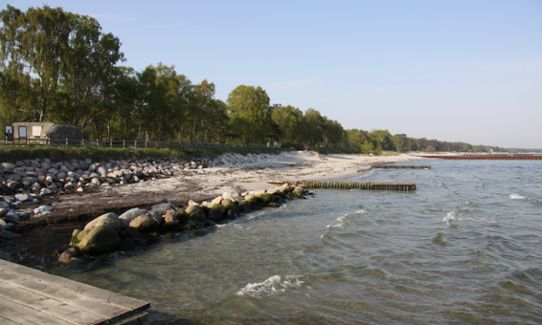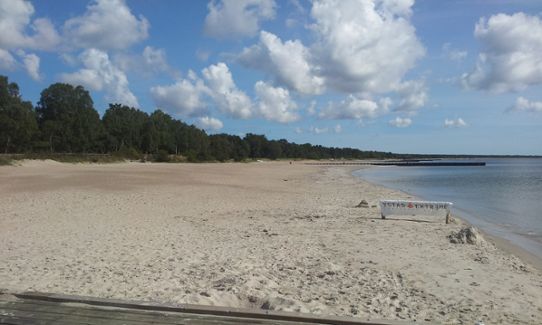Ystad is located right at the sea and the coastal areas outside the city are important for Ystad Municipality’s natural environment, recreational opportunities and economy. Many important industries and residential areas are threatened, however, by the strip of beach shrinking due to erosion, a problem that has been noticed in Ystad since the mid-1800s. Erosion is a natural process that takes place all the time, but due to rising sea levels, the problems will get worse in the future. The coasts outside the city are gradually disappearing and have done so for a very long time. The erosion threatens buildings and infrastructure along the municipality’s entire coast.

First large-scale beach nourishment in Sweden
In spring 2011, a beach nourishment project was implemented on a large scale in Sweden for the first time when 100,000 m3 of sand was taken up and placed on the two worst impacted beaches, Löderups Strandbad and Ystad Sandskog. The beach nourishment involves two processes: taking up sand from the seabed and laying sand on the beach. As erosion protection, beach nourishment preserves the natural and recreational assets that a sand beach possesses. The sand does not remain forever, but also gradually erodes away, but in the meantime serves as a natural protection against seawater pushing into developed areas or fresh water environments. The deposited sand is gradually transported away by the waves and it is then time to perform the procedure again.
The sand was taken from Sandhammarbank, a natural sand accumulation pit. The sand was retrieved at a depth of 20-25 metres and sucked up onto a ship through trailing suction dredgers. The trailing suction dredgers can be compared to vacuum cleaner heads that suck the sand up from the seabed to the ship. The procedure has thus far not proven to cause any lasting damage to flora and fauna in the sea or on the beach. However, annually recurring checks will be needed to obtain certain answers.

Results of the beach nourishment
+ Natural buffer against storm damage
+ Preservation of tourism
+ Protection of properties and infrastructure
+ Protection against salt water intrusion
- Uncertainty regarding impact on the marine environment
- Requires large labour input and a lot of preparation in the form of permit applications
- Continuous laying of sand
Financing
Ystad has budgeted to implement beach nourishment every three years at SEK 10 million. In 2014, a second round was done and the third will be done in 2017. The beach nourishment is financed by Ystad Municipality. Studies that form the basis for permits under the Environmental Code and the Continental Shelf Act for the beach nourishment costed SEK 3 million.
More examples of climate adaptation
This is one of many examples of climate adaptation. There are more in the collection of ideas being built up by the Swedish National Knowledge Centre for Climate Change Adaptation at the Swedish Meteorological and Hydrological Institute (SMHI). The collection of examples has the aim of sharing experiences and providing ideas to everyone who works with climate adaptation. Examples describe concrete measures and challenges in several subject areas. They show how different actors have worked to adapt their activities to the climate changes that are already being noticed today and those that we cannot prevent in the future.